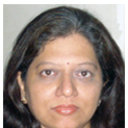Immunomodulatory active compounds from Tinospora cordifolia.
Palavras-chave
Resumo
BACKGROUND
Tinospora cordifolia mentioned as "Rasayana" is extensively used in various herbal preparations for the treatment of different ailments for its general tonic, antiperiodic, antispasmodic, antiinflammatory, antiarthritic, antiallergic and antidiabetic properties. It is extensively used in Ayurveda due to its potential in improving the immune system and the body resistance against infections.
OBJECTIVE
The aim of the study was to isolate and characterise the immunomodulatory active compounds of Tinospora cordifolia.
METHODS
The immunomodulatory activity of different extracts, fractions and isolated compounds in relation to phagocytosis and reactive oxygen species production in human neutrophil cells have been investigated using the PMN phagocytic function studies, NBT, NO and chemiluminescence assay.
RESULTS
The results obtained indicate that ethyl acetate, water fractions and hot water extract exhibited significant immunomodulatory activity with an increase in percentage phagocyctosis. Chromatographic purification of these fraction led to the isolation of a mixture of two compounds 2, 3 isolated for the first time from natural source and five known compounds 1, 4-7 which were characterized as 11-hydroxymustakone (2), N-methyl-2-pyrrolidone (3), N-formylannonain (1), cordifolioside A (4), magnoflorine (5), tinocordiside (6), syringin (7) by nuclear magnetic resonance (NMR) and mass spectrometry (MS) and comparing the spectral data with reported one. Cordifolioside A and syringin have been reported to possess immunomodulatory activity. Other five compounds showed significant enhancement in phagocytic activity and increase in nitric oxide and reactive oxygen species generation at concentration 0.1-2.5 μg/ml.
CONCLUSIONS
Seven immunomodulatory active compounds belonging to different classes have been isolated and characterised indicating that the immunomodulatory activity of Tinospora cordifolia may be attributed to the synergistic effect of group of compounds.





